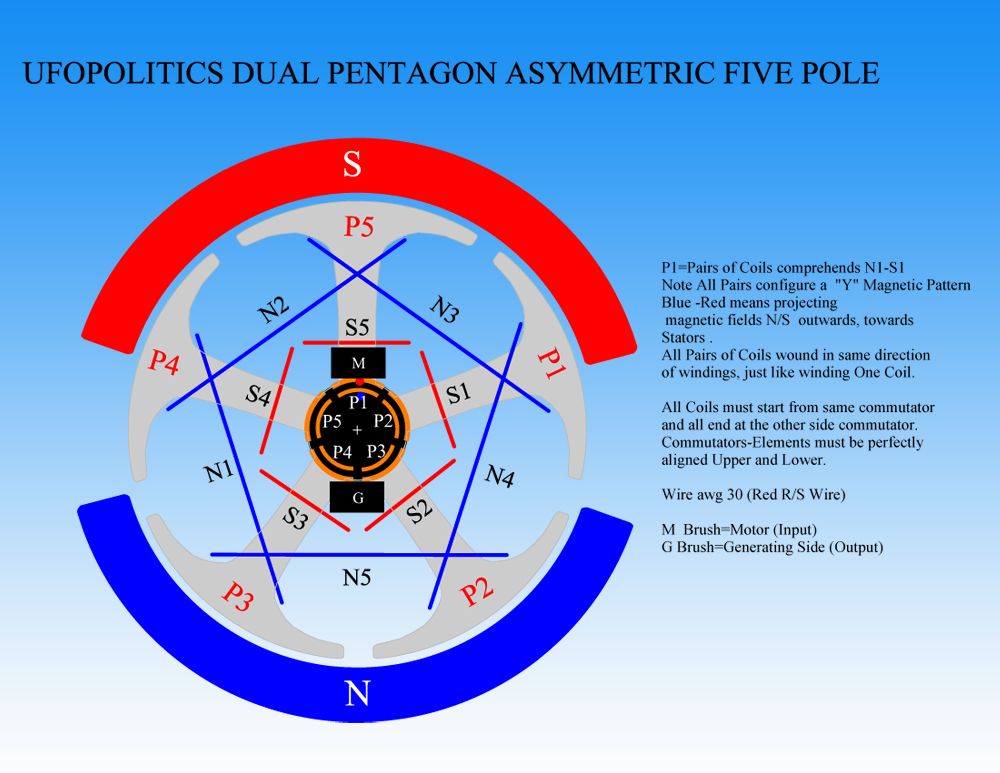Hi ALL;
as I am resticted in motor building for some time I spend free time in digging into OU theories and replications.
Most sources state we need to have a high effitiency machine before in order to produce radiant. SHE will not visit other places. In so far UFOs motor is one of those great machines being given to the world freely. It is vauable in itself for higher effiecency - but this machine is not OU in itself and never will be (my feeling). It is a suitable platform for growing it up.
I am surpised that harvesting RE seems to relate very strongly to theories and curent practice RF engineers know (unfortunately I am not RF educated - is there any out there?). In optics they apply OU effects and nobody bothers. They could feed some valuable details as well. Qunta mechanic science knows OU - 2 American scintists got Nobel award 1952 for proving broken symmetry.
But if we look at standard electromagentic scince they are frozen since 130 years.
I confess I do not understand more than 5% of those scientific papers just now. But those 5% are a pale light showing direction to go.
OU can not be harvested from one single stage. First stage are those high effitiency machines stirring whatever the source of OU is.
Electricity is told to emanate in 9 different ways and we know and master just one. All those emanations relate to each other.
Imagine a tetrahedron. All edges and vertivces are related and can not be modified without affecting the other (we know just one vertex).
So please comprehend known electricity as just one emanation of a mesh network of energy a plurality of energy states.
Thus we can understand that OU is based on transformations of those emanations being given by creation but ignored by mankind. Imagine those 3 basic colors. If they interact they emanate as other color (transformation) - but the originals ones are present and need to be.
Additional to transformation we need to povide a isolation in order to prevent reactions to the source like known at normal transformers. Secondary load current opens the primary door in order to drain energy at primary side. In fact this energy is lost and will never surfice on secondary side.
Do not believe we need to just add some diodes and a cap in order to power our houses. We will not succeed with shortcuts - we ned to obey natural laws. But once understood and tested out it will be much more feasible to spread this technology all over the world.
JS
as I am resticted in motor building for some time I spend free time in digging into OU theories and replications.
Most sources state we need to have a high effitiency machine before in order to produce radiant. SHE will not visit other places. In so far UFOs motor is one of those great machines being given to the world freely. It is vauable in itself for higher effiecency - but this machine is not OU in itself and never will be (my feeling). It is a suitable platform for growing it up.
I am surpised that harvesting RE seems to relate very strongly to theories and curent practice RF engineers know (unfortunately I am not RF educated - is there any out there?). In optics they apply OU effects and nobody bothers. They could feed some valuable details as well. Qunta mechanic science knows OU - 2 American scintists got Nobel award 1952 for proving broken symmetry.
But if we look at standard electromagentic scince they are frozen since 130 years.
I confess I do not understand more than 5% of those scientific papers just now. But those 5% are a pale light showing direction to go.
OU can not be harvested from one single stage. First stage are those high effitiency machines stirring whatever the source of OU is.
Electricity is told to emanate in 9 different ways and we know and master just one. All those emanations relate to each other.
Imagine a tetrahedron. All edges and vertivces are related and can not be modified without affecting the other (we know just one vertex).
So please comprehend known electricity as just one emanation of a mesh network of energy a plurality of energy states.
Thus we can understand that OU is based on transformations of those emanations being given by creation but ignored by mankind. Imagine those 3 basic colors. If they interact they emanate as other color (transformation) - but the originals ones are present and need to be.
Additional to transformation we need to povide a isolation in order to prevent reactions to the source like known at normal transformers. Secondary load current opens the primary door in order to drain energy at primary side. In fact this energy is lost and will never surfice on secondary side.
Do not believe we need to just add some diodes and a cap in order to power our houses. We will not succeed with shortcuts - we ned to obey natural laws. But once understood and tested out it will be much more feasible to spread this technology all over the world.
JS




 .
.










Comment